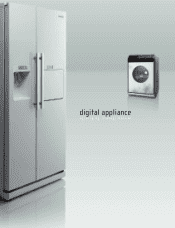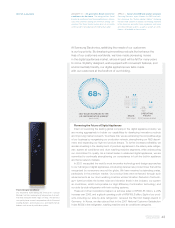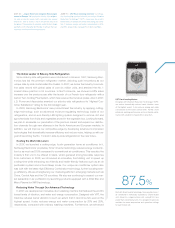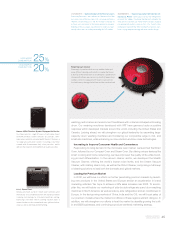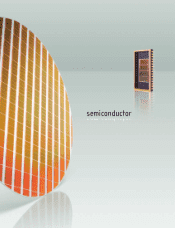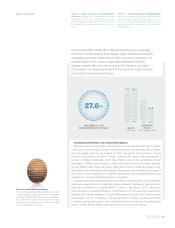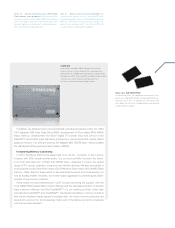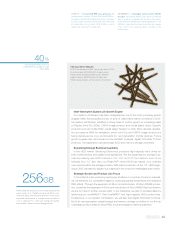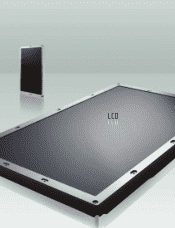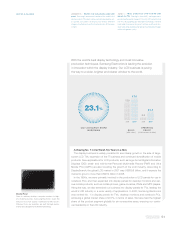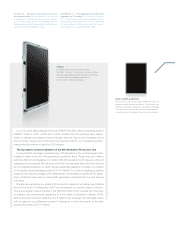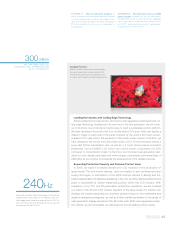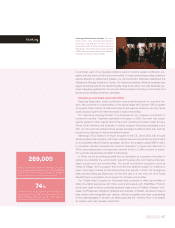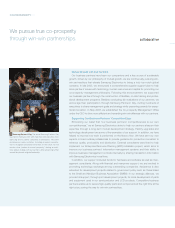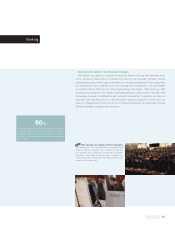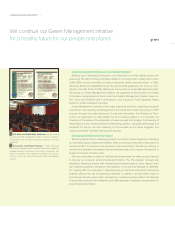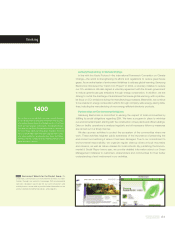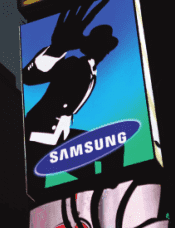Samsung 2007 Annual Report Download - page 54
Download and view the complete annual report
Please find page 54 of the 2007 Samsung annual report below. You can navigate through the pages in the report by either clicking on the pages listed below, or by using the keyword search tool below to find specific information within the annual report.
TV Panel
Our highly impressive LCD TV panels range
from 26 to 70 inches. The successful commercialization
of our 8th-generation production lines has transformed
us into the industry-leading manufacturer of
LCD TV panels, 46 inches or greater.
Small- and Mid-sized Panels
We are producing a wide range of AMOLED sizes for
premium mobile multimedia devices. The displays use
Samsung’s proprietary amorphous silicon gate technology
and their production has reduced the mobile panel cir-
cuitry footprint and the number of parts by about one-third.
Our LCD panel sales reached more than KRW17.06 trillion with an operating profit of
KRW2.11 trillion in 2007, a 23% and a 147% increase from the previous year, respec-
tively, to maintain the industry’s best profit rate. With the help of price increases due to
short product supply and continuing cost-reduction efforts, our outstanding perfor-
mance should continue to lead the LCD industry.
The Successful Commercialization of the 8th-Generation Production Line
In August 2007, we began manufacturing LCD panels from the world’s largest moth-
erglass to date, at the first 8th-generation production lines. These lines can make a
2200 by 2500mm motherglass, from which 300,000 panels a month (based on 52-inch
panels) can be produced. We returned a profit for the new lines after only three months
of commercial production. In 2008, we are expanding capacity to bolster our position
in the rapidly expanding large-screen LCD TV market. Our industry-leading production
capacity here will be leveraged with investments in the building of additional 7th-gener-
ation production lines, and our second 8th-generation production line in a joint venture
with Sony.
We also are expanding our global LCD production capacity by building new facilities
around the world. In September 2007, we completed our second plant in Suzhou,
China and already have produced more than five million LCD modules for TVs there.
In addition, we commenced operations in a new plant in Slovakia in January 2008.
With a annual production capacity of 2.5 million LCD modules, the Solvakian plant
will increase its cost efficiency quickly in helping us to meet the needs of the fast-
growing European LCD TV market.
AUGUST 28 Successful mass production of the
8th-generation line Samsung Electronics has secured
its leadership position through the successful shipment
of LCD panels produced from its 8th-generation line.
With growing demand for larger panels, the 8th-genera-
tion line is essential to fulfilling this need.
SEPTEMBER 17 First aggregate 200 million LCD
shipments for IT products As of the end of August
2007, we shipped an industry-first aggregate of 2.04
hundred million LCD panels for IT products, exceeding
200 million shipments. This took place over the course of
12 years after mass production began in 1995.


